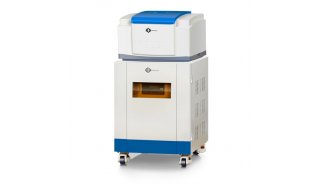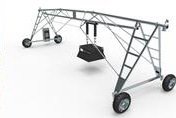叶绿素荧光技术-植物逆境高温胁迫测量技术
随着全球变暖,植物高温胁迫研究受到越来越多的关注,研究手段也越来越丰富,其中包括植物荧光测量:NPQ, Fv/Fm, OJIP, and Quantum Photosynthetic Yield。本文将着重介绍如何高效、快速简便地测量这些荧光参数。
非光化学淬灭(NPQ)测量
非光化学淬灭(NPQ)测量可以很好地反映植物高温胁迫(Schreiber U. 2004)(Tang Y., Wen X., Lu Q., Yang Z., Cheng Z., & Lu C. 2007) (Haldiman P, & Feller U. 2004),但测量过程需要耗费较长的时间以及很好的耐心。
通常情况下,在野外测量植物非光化学淬灭(NPQ)之前要进行8-12 h或一整夜的暗适应,在实验室中,暗适应时间需要12-24 h(Maxwell and Johnson 2000)。除了暗适应时间的长短、暗适应是否成功等因素外,NPQ的测量还需要注意一点,就是必须要在叶片达到光合作用稳态后再开始测量,这很容易达到,只要将叶片放在稳定的光照水平下15-20 min即可实现,一般使用人工光源(Maxwell and Johnson 2000)。
植物非光化学淬灭要经过长达60 h的弛豫过程才能从光抑制状态恢复,所以即使是一整夜的时间也不充分,因此,NPQ过程总会有部分未完成测量。判断NPQ测量的尺码为Fv/Fm中的Fm值的高低(Baker 2008),所以在进行结果比较时,选择具有相同或者相似Fv/Fm的样品至关重要。
NPQ的测量主要用于研究35℃及以上的高温胁迫,NPQ饱和光闪曲线图能够很好的反映高温胁迫对植物的影响,NPQ随着时间降低,光合作用量子产量随时间增加。(Schreiber U. 2004)

高温胁迫的恢复期,样品在35℃条件下处理5 min,恢复期出现在20℃。
Fv/Fm and OJIP测量
 Fv/Fm和OJIP可以快速测量,测量之前对样品进行暗适应的时间范围从20 min到整夜,也可以使用黎明前的测量数据。但研究显示这两个参数对于反映植物高温胁迫有一定的局限性,已有研究显示,Fv/Fm只能反映45℃左右的高温胁迫,OJIP只能反映44℃及以上的高温胁迫。 (Haldiman P, & Feller U. 2004), (Crafts-Brander and Law 2000), and OJIP will only detect heat stress at about 44℃ or higher (Strasser 2004).
Fv/Fm和OJIP可以快速测量,测量之前对样品进行暗适应的时间范围从20 min到整夜,也可以使用黎明前的测量数据。但研究显示这两个参数对于反映植物高温胁迫有一定的局限性,已有研究显示,Fv/Fm只能反映45℃左右的高温胁迫,OJIP只能反映44℃及以上的高温胁迫。 (Haldiman P, & Feller U. 2004), (Crafts-Brander and Law 2000), and OJIP will only detect heat stress at about 44℃ or higher (Strasser 2004).
Quantum Photosynthetic Yield测量 (△F/F’)
最适合反映高温胁迫可能也是最好测的参数应该是光合作用量子产量(△F/F’)。
 将植物叶片在光照条件下达到光合作用稳态时,或者将植物叶片置于稳定的光照水平下15-20 min,即可测得△F/F’参数。(Maxwell and Johnson 2000).
将植物叶片在光照条件下达到光合作用稳态时,或者将植物叶片置于稳定的光照水平下15-20 min,即可测得△F/F’参数。(Maxwell and Johnson 2000).
众多研究表明,使用自然光,△F/F’测量更快捷迅速,只需要2-5 s即可完成。△F/F’ 随着光照水平的变化而变化,所以要么控制植物样品的光照水平以做对比,要么通过PAR叶夹测量叶片实际光照水平,比较相似光照水平的测量结果。
在野外测量时,多云天气会对测量造成影响。此外,通常选择太阳直照的叶片作为测量对象,因为光斑、风吹都会阻碍植物叶片光合作用达到稳态。 
文献显示,△F/F’ 能够反映出35℃及以上的高温胁迫(Haldiman P, & Feller U. 2004), ( Dascaliuc A., Ralea t., Cuza P. 2007)。
△F/F’可以通过很多荧光测量仪器测得,如美国Opti-Sciences系列仪器,OS5p多功能调制叶绿素荧光仪 和 OS1p便携式调制叶绿素荧光仪。NPQ 最好用OS5p多功能调制叶绿素荧光仪,因为它有非常稳定的活化光源。CO2气体交换测量方法能够反映出30℃左右的高温胁迫 (Haldiman P, & Feller U. 2004).对于想同时测量植物CO2气体交换和荧光参数的用户,可以使用OS5P多功能调制叶绿素荧光仪与ADC LCpro+植物CO2气体交换测量联用系统。
参考文献
Baker N.R, (2008) “Chlorophyll Fluorescence: A Probe of Photosynthesis In Vivo” Annu. Rev. Plant Biol. 2008. 59:89–113
Crafts-Brandner S. J., Law R.D. (2000) Effects of heat stress on the inhibition and recovery of ribulase-1, 5-biphsphate carboxylase/ oxygenase activation state. Planta (2000) 212: 67-74
Dascaliuc A., Ralea t., Cuza P., (2007) Influence of heat shock on chlorophyll fluorescence of white oak (Quercus pubescens Willd.) leaves. Photosynthetica 45 (3): 469-471, 2007
Haldimann P, & Feller U. (2004) Inhibition of photosynthesis by high temperature in oak (Quercus pubescens L.) leaves grown under natural conditions closely correlates with a reversible heat dependent reduction of the activation state of ribulose-1,5-bisphosphate carboxylase/oxygenase.
Lichtenthaler H. K., Burkart S., (1999) Photosynthesis and high light stress. Bulg. J. Plant Physiol., 1999, 25(3-4), 3-16
Lichtenthaler H. K., Babani F. (2004) Light Adaption and Senescence of the Photosynthetic Apparatus. Changes in Pigment Composition, Chlorophyll Fluorescence Parameters and Photosynthetic Activity. From Chapter 28, “Chlorophyll a Fluorescence a Signature of Photosynthesis”, edited by George Papaqeorgiou and Govindjee, published by Springer 2004, PO Box 17, 3300 AA Dordrecht, The Netherlands, page 716
Maxwell K., Johnson G. N, (2000) Chlorophyll fluorescence – a practical guide. Journal of Experimental Botany Vol. 51, No. 345, pp. 659-668- April 2000
Schreiber U, (2004)Pulse-Amplitude-Modulation (PAM) Fluorometry and Saturation Pulse Method: An Overview From Chapter 11, “Chlorophyll a Fluorescence a Signature of Photosynthesis”, edited by George Papaqeorgiou and Govindjee, published by Springer 2004, PO Box 17, 3300 AA Dordrecht, The Netherlands, page 279-319
Strasser R.J, Tsimilli-Michael M., and Srivastava A. (2004) - Analysis of Chlorophyll a Fluorescence Transient. From Chapter 12, “Chlorophyll a Fluorescence a Signature of Photosynthesis”, edited by George Papaqeorgiou and Govindjee, published by Springer 2004, PO Box 17, 3300 AA Dordrecht, The Netherlands, page 340
Tang Y., Wen X., Lu Q., Yang Z., Cheng Z., Lu C., (2007) Heat stress induces an aggregation of the light-harvesting complex of photosystem II in spinach plants. Plant Physiology, Feb. 2007 Vol. 143, pp629-638




















